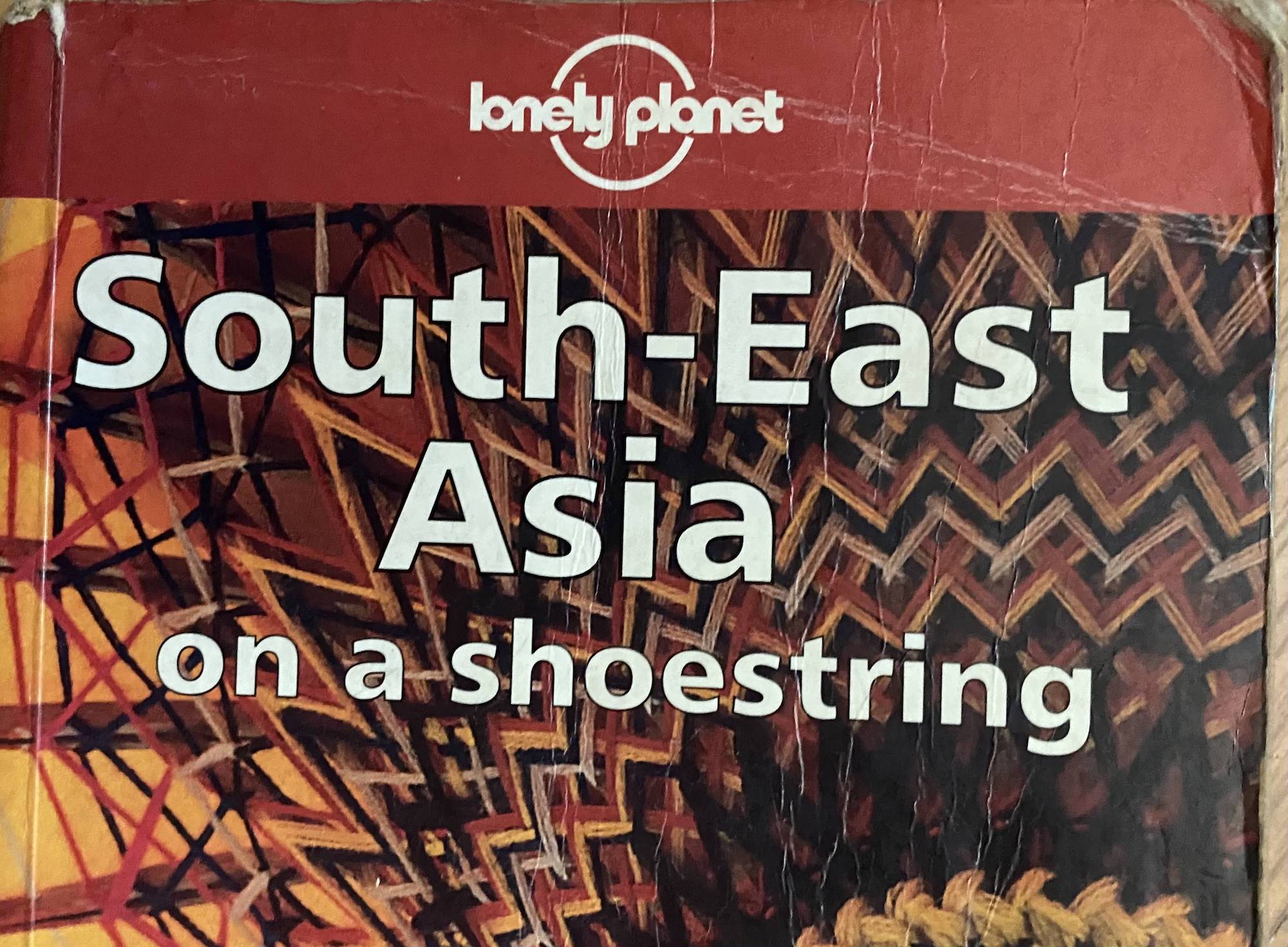“Good Digs in Timbuktu”
By Nicholas D. Kristof
(an excerpt)
It was the slow train to Ouagadougou, the capital of Burkina Faso in West Africa, and it had just stopped at the border of the Ivory Coast. Among the mango sellers alongside the train, I found two Canadians who were headed in the same direction.
”Where are you going to stay?” I asked them.
”Well, Geoff recommends the Protestant Mission in Bobo Dioulasso,” said one. ”But of course Geoff is always wrong.”
Geoff is often wrong, it is true, but nevertheless we began to talk about him in worshipful tones, recognizing him as the patron saint of travelers in the third world. A quasi-hippie who has written handbooks for traveling cheaply in Africa, South America and Asia, Geoff Crowther always pops up in conversations in odd places and situations: while riding on top of a Sudanese train, looking for the monkey temple in Katmandu, Nepal, or while traveling in a bus across the Algerian desert.
There is something of a cult following for his guidebooks and others put out by an Australian company called Lonely Planet Publications. Until recently the Lonely Planet Guides were known primarily abroad, but since the company opened a wholesale distribution center in 1984 in California, sales in the United States have soared – to some 100,000 copies last year. The 44 titles (some are phrase books) available in the United States and overseas include ”Bushwalking in Papua New Guinea,” ”South America on a Shoestring” ”Trekking in the Himalayas” and ”China – a Travel Survival Kit.” There are guides, too, on Korea and Taiwan, Mexico and the Philippines.
Tony Wheeler, the founder of Lonely Planet, who lives in Melbourne, published the first guide in 1973 after he and his wife, Maureen, traveled by land and sea from England to Australia – without the benefit of any guidebook. They started the journey with a car purchased for $150, sold it in Afghanistan for $155, and continued by train, bus, boat and every other mode of transportation imaginable. They decided to convert their travel notes into a guidebook, and soon they were running a full-time writing and publishing business that eventually acquired disciples from Argentina to Zimbabwe. Mr. Crowther began writing guidebooks for Lonely Planet in 1977.
One indication of Mr. Wheeler’s impact is the ”Tony Wheeler Slept Here” sign on a small hotel in Jodhpur, India. Next to the sign is the page from the hotel register that Mr. Wheeler signed when he stayed at the hotel years ago. Travelers gaze at it wistfully; the hotel has been touched by the gods.
The Lonely Planet guidebooks are, quite simply, like no others. Fodor’s and its ilk generally focus on luxury hotels, airlines and tour groups. Lonely Planet tells you how to hop a free ride on a boat on Nicaragua’s Caribbean coast, where to find families to stay with in Timbuktu and where to find penicillin in Bangkok.
More recent guides list some fancy hotels and cover developed countries such as Japan, but the emphasis remains on backpacking through the third world and staying at $2-a-night dives where you may have to sleep on the roof.
In several years of dedicated traveling to 50-odd countries, mostly in Africa and Asia, I relied almost exclusively on these books, which for all their errors are both lively reading and, when you’re trying to find a boat to hitch a ride on China’s Li River, indispensable.
The books are extremely audacious – Mr. Crowther’s ”Africa on a Shoestring,” for example, attempts to cover 54 countries or areas in Africa or off its coasts. But he did not visit all of them, and much of the detail has been supplied by travelers who send in information in exchange for a mention in the next issue and a free copy. The following invitation appears in the book under the heading Comoro Islands (the French group of islands north of Madagascar): ”We haven’t heard of anyone going there for a long time so we have no details to offer. If you do go, please drop us a line.”
Partly because the series is so ambitious, the books are also rife with errors. ”Since when has the ancient and well-represented word ‘opposite’ meant ‘further down the street, take the first left, go around a cornfield and take a sharp right just before the military camp’?” groused one traveler in a letter reprinted in the latest edition of the Africa guide. ”Couldn’t you put a caveat in your next edition telling unsuspecting travelers that your directions are an unbridled act of creativity, a spontaneous outpouring of the mango wine-fueled imagination?”
Mr. Wheeler tells a story about a more substantial discrepancy. While hitching through North Borneo several years ago, he heard from another traveler of a wonderful excursion involving a one-and-a-half-day hike through the jungle. The hike was suggested in the next edition of ”Southeast Asia on a Shoestring.” Then, a couple of years ago, a man walked into Mr. Wheeler’s office and said: ‘You know that hike that you said would take a day and a half? It took me six weeks. Halfway through I was cursing your name, but later I realized it was the greatest adventure I’d ever had.”
For all the gaffes, the Lonely Planet guide is almost always the best there is for a nontourist region of a third world country. No other guide, for example, attempts to write comprehensively about surface transportation around Africa. The books also manage to report intriguing sites that are often omitted – because they are out of the way or not on formal tours – from more orthodox guides.
In Egypt, where I lived for a year, two of the most fascinating places to visit are the Cairo camel market, where hundreds of Bedouins (as well as camels) mill about, and the oases in the Western Desert, where the inhabitants abound with friendliness and the palms trees overflow with dates. These are emphasized in ”Africa on a Shoestring” but are rarely even touched on in other guidebooks. The Lonely Planet books succeed largely because of the contributions from travelers that are incorporated into the next edition, often at length. The street map of Monrovia, Liberia, in the current ”Africa on a Shoestring” is, I’m pretty sure, the one I bought for a few cents in the city and sent to the publisher.
To make use of the mountain of updated information that pours into its office, the company issues a quarterly newsletter. If someone reports that the short border guard on the Niger side of the Algerian border threatens single women travelers, the information is published in the newsletter and perhaps in the next edition of the Africa guide as well -maligning all short border guards in the vicinity for years. (The newsletter, which costs $10 a year, is available from Lonely Planet Publications, 1555D Park Avenue, Emeryville, Calif. 94608. The guides cost from $6.95 to $14.95 and are sold at travel bookstores and some other bookshops.) Portions of letters are also included in the books and make them fun to read. David Bennett, a Canadian, wrote about his journey through remote areas of the Congo. ”But you must know Mr. Jurgen; he is your brother,” Mr. Bennett was told by a border guard as he entered the Congo from Gabon. And everywhere he went, he was asked how Jurgen was doing. Mr. Bennett’s ticket to hospitality, or method of removing visa obstacles, was to mention Jurgen’s name.
So who was he? It turned out that Jurgen Schultz had been the last non-African to visit the area – three years earlier.
A version of this essay originally appeared in the New York Times on Feb. 23, 1986, under the headline, “Good Digs in Timbuktu.”





